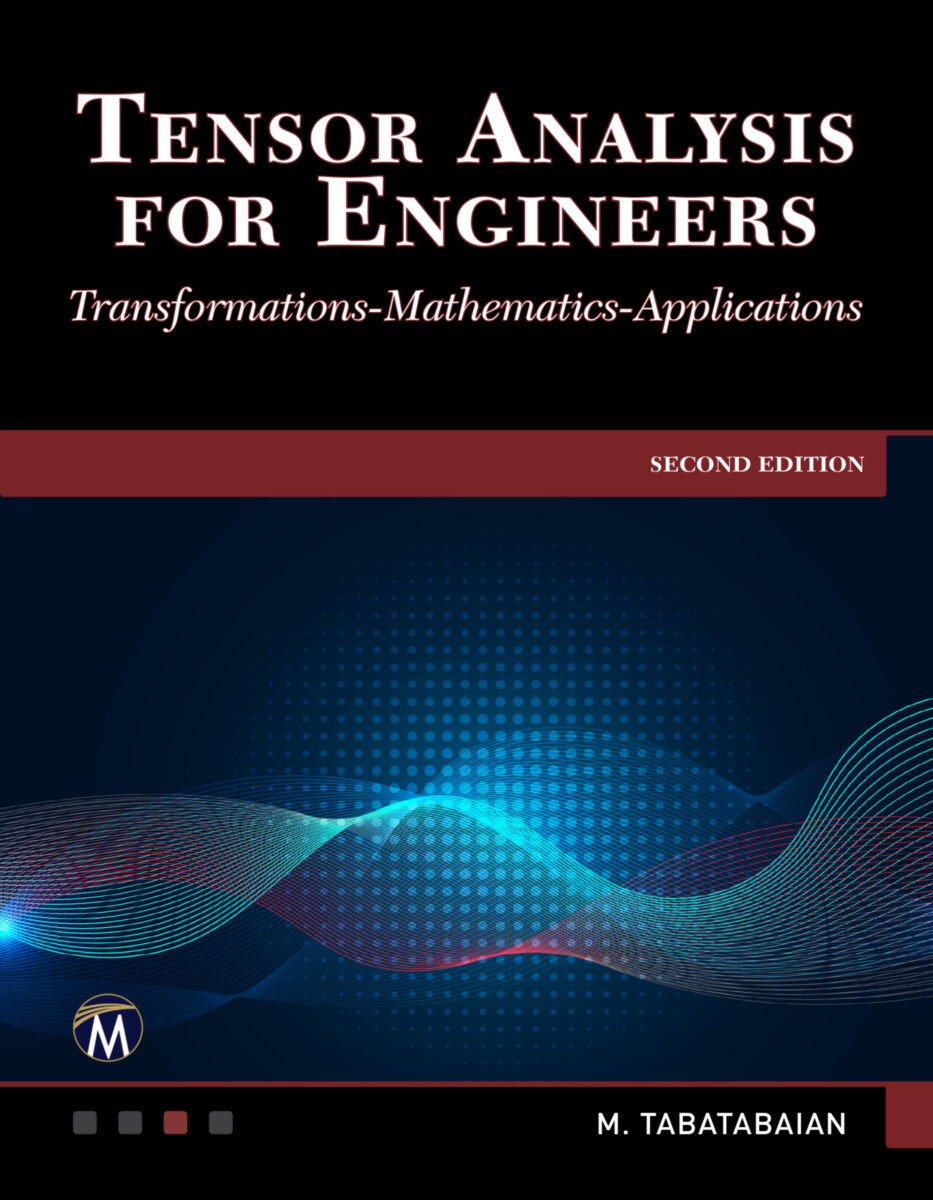Tensor Analysis for Engineers Edition 2
Transformations - Mathematics - Applications
- Publisher
Mercury Learning and Information - Published
30th November 2020 - ISBN 9781683926016
- Language English
- Pages 182 pp.
- Size 7" x 9"
- Request Exam Copy
E-books are now distributed via VitalSource
VitalSource offer a more seamless way to access the ebook, and add some great new features including text-to-voice. You own your ebook for life, it is simply hosted on the vendor website, working much like Kindle and Nook. Click here to see more detailed information on this process.
- Publisher
Mercury Learning and Information - Published
13th October 2020 - ISBN 9781683925996
- Language English
- Pages 182 pp.
- Size 7" x 9"
- Request E-Exam Copy
Library E-Books
We are signed up with aggregators who resell networkable e-book editions of our titles to academic libraries. These editions, priced at par with simultaneous hardcover editions of our titles, are not available direct from Stylus.
These aggregators offer a variety of plans to libraries, such as simultaneous access by multiple library patrons, and access to portions of titles at a fraction of list price under what is commonly referred to as a "patron-driven demand" model.
- Publisher
Mercury Learning and Information - Published
13th October 2020 - ISBN 9781683926009
- Language English
- Pages 182 pp.
- Size 7" x 9"
Tensor analysis is used in engineering and science fields. This new edition provides engineers and applied scientists the tools and techniques of tensor analysis for applications in practical problem solving and analysis activities. The geometry is limited to the Euclidean space/geometry, where the Pythagorean Theorem applies, with well-defined Cartesian coordinate systems as the reference. Quantities defined in curvilinear coordinate systems, like cylindrical, spherical, parabolic, etc. are discussed and several examples and coordinates sketches with related calculations are presented. In addition, the book has several worked-out examples for helping readers with mastering the topics provided in the prior sections.
FEATURES:
- Expanded content on the rigid body rotation and Cartesian tensors by including Euler angles and quaternion methods
- Easy to understand mathematical concepts through numerous figures, solved examples, and exercises
- List of gradient-like operators for major systems of coordinates.
1. Introduction
2. Coordinate systems
3. Curvilinear and oblique coordinate systems
4. Basis vectors and scale factors
5. Contravariant
components and transformations
6. Physical components and transformations
7. Tensors
– mixed and metric
8. Metric tensor operation on tensor indices
9. Dot and
cross products of tensors
10. Gradient vector operator-Christoffel symbols
11.
Derivative forms-curl, divergence, Laplacian
12. Cartesian tensor
transformation-rotations
13. Coordinate independent governing equations
14. Collection of relations for selected coordinate systems
15. Rigid body rotation: Euler angles, quaternions, and rotation matrix
16. Worked-out examples
17. Exercises
References
Index
Mehrzad Tabatabaian, PhD, PEng
Mehrzad Tabatabaian, PhD, PEng, is currently Chair of the BCIT School of Energy Research Committee. He has published several papers for scientific journals and has written textbooks on multiphysics modelling and thermodynamics. He holds several registered patents in the energy field and teaches courses in renewable energy.


